Important impact assessment developments of 2022
Just when we thought that the global situation was settling after COVID, the world is again shaking. Wars and crises, floods, earthquakes, heat waves and the eight warmest years since registers exist – more than ever, we need experts in life cycle assessment (LCA) to assist the world in the transition to a more sustainable model. Fortunately, this year shows plenty of developments in impact assessment. This paper was written by Alba Roibás Rozas and Laura Golsteijn with contributions from Eleonore Pierrat, Anne-Marie Boulay, Mikołaj Owsianiak, Peter Fantke, Chloe Stanford-Clark, Almudena Hospido, and Montserrat Núñez.
Generation and update of characterization factors
Impacts of water use on ecosystem quality
Spatially differentiated LCIA models already exist for calculating water consumption impacts on ecosystem quality, but they have a restricted geographical coverage. To address these issues, a group of European researchers from multiple affiliations developed updated characterization factors as part of UNEP-SETAC’s initiative in the definition of a Global Life Cycle Impact Assessment Method (GLAM). In this case, in the task force dedicated to ecosystems LCIA. The new model quantifies the damage of water consumption on freshwater fish species richness and covers more than 2000 river basins globally (88% of the global landmass). It includes state-of-the-art fish species data and corrects for the confounding effect of climate and altitude. The characterization factors are divided into four sets, distinguishing the marginal and non-marginal impacts of water consumption on regional and global freshwater fish biodiversity. This gives LCA practitioners more modeling flexibility.
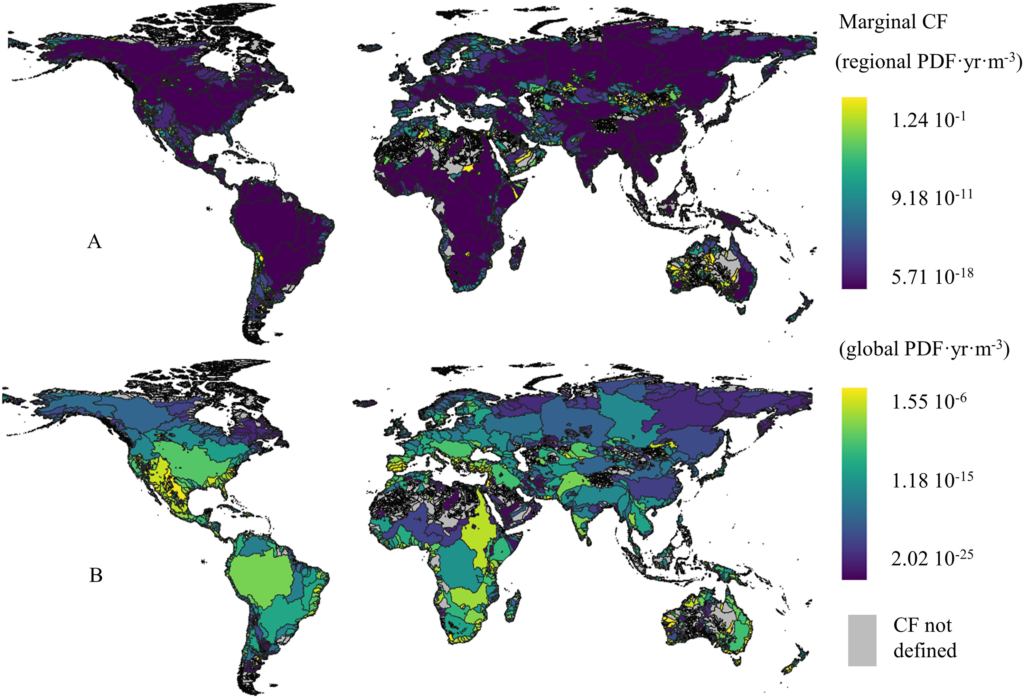
Release of AWARE 2.0
Five years after the initial publication of the global consensus methodology for water use impacts at the midpoint level, it was time for an update! AWARE 2.0 is ready and the publication is under preparation. The update does not alter any of the methodological choices made by the original authors, but rather provides an improved version with more recent data, better representation of the geographical boundaries, improved representativeness of deltas, a more refined calculation of environmental water requirements, an improved consideration of upstream/downstream interactions in large basins, and more. Factors will be made available early 2023 on www.wulca-waterlca.org, and implemented in SimaPro soon after.
Impacts of plastic litter in aquatic environments
The goal of the MarILCa working group is to foster the development of marine impact assessment in LCIA, starting with plastic litter. MarILCa was set up in collaboration between the Life Cycle Initiative and the Forum for Sustainability and through Life Cycle Innovation (FSLCI) in late 2018 (see our update of 2019, 2020, and 2021). Now, their characterization factors for impacts of microplastics emissions to the aquatic/marine environment are ready!
The characterization factors were presented at LCA Food 2022 and have been submitted for publication. They include a range of 5 different microplastics sizes, 9 different polymers (EPS, PP, LDPE, HDPE, PS, PLA, PET, PVC and TRWP) and 3 different shapes (bead, film, and fiber). For each polymer, a reduced set of factors is proposed as the default. The characterization factors can be used with inventory data quantifying a certain amount of microplastic emissions to the marine environment. An adapted set of factors will be proposed for an assessment of emissions to the aquatic (freshwater) environment as well. The factors will be made available online on http://www.marilca.org in late 2022 or early 2023, as part of UNEP-SETAC’s GLAM initiative.
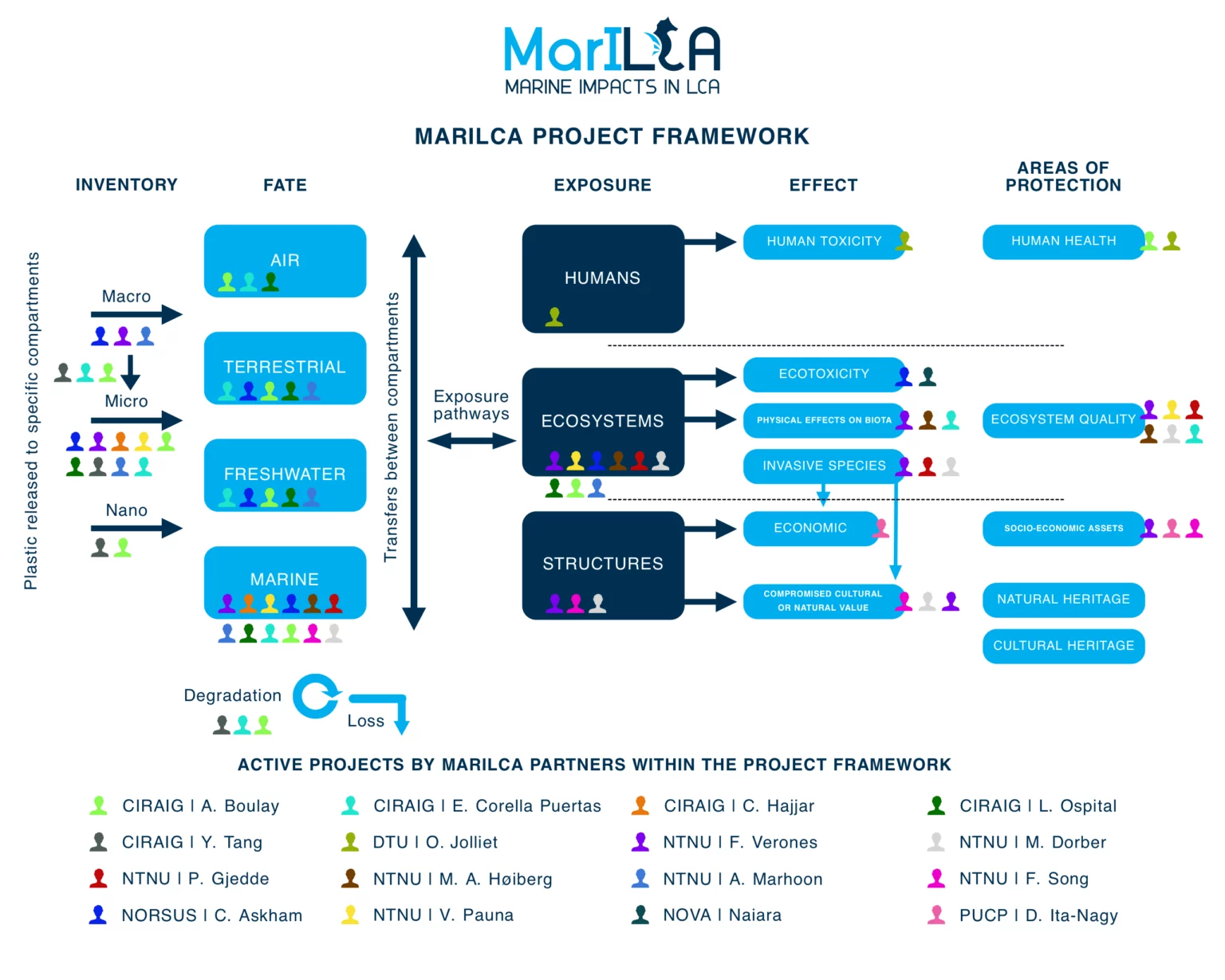
Pesticide emission modeling
Current approaches to field emission modeling and toxicity characterization of pesticides suffer from several shortcomings: mismatches between LCI databases and LCIA methods, missing characterization factors, missing environmental compartments and environmental impact pathways, and more. As output of the OLCA-Pest project, a team of LCA researchers and practitioners from Switzerland, France, Spain and Denmark have created advanced methods and derived practical recommendations for modeling pesticide emissions in life cycle assessment. These recommendations are an important step forward for operationalizing pesticide emission estimation as part of life cycle inventory (LCI) analysis.
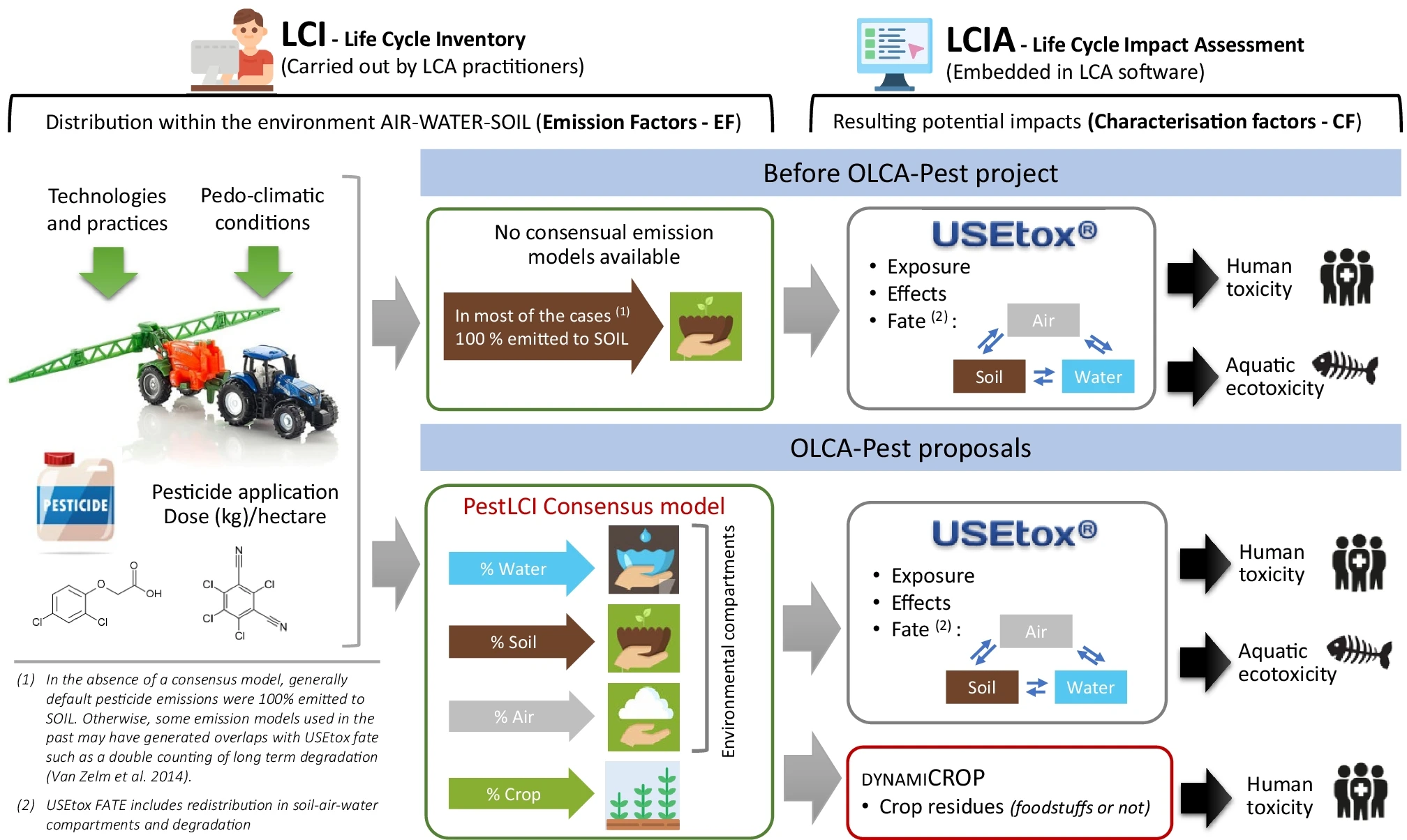
Improvement of methodological frameworks in impact assessment
Metal resource impact assessment
Environmental dissipation is a novel approach to account for impacts from metal resources. In contrast to all other resource-related life cycle impact assessment methods, which use data on extractions as input to calculate indicator scores, environmental dissipation is characterized solely through emissions to the environment. Researchers at DTU have developed a new method that allows for differentiation of truly dissipative metal emissions from those anthropogenic releases which do not contribute to loss of accessibility of a given metal resource. This new classification approach makes it possible to apply environmental dissipation as an impact category in life cycle assessment.
Impact pathway for biomass removal by fisheries
Removal of biomass by fishing activity is one of the main drivers of biodiversity loss in marine ecosystems. It is currently an underdeveloped area of LCIA, without an operational endpoint assessment consistent with current guidelines. To build this impact pathway, a group of scientists from France proposed a new approach that quantifies and operationalizes the impact of depletion of individual fish stocks in a region based on a stock management model. This work provides characterization factors at regional and global scales, in units suitable for implementation in the next version of ReCiPe. The next step is to move from an individual species level to the impact on the ecosystem. In their new article, about to be released, the authors incorporate ecosystem dynamics through trophic interactions to provide updated characterization factors.
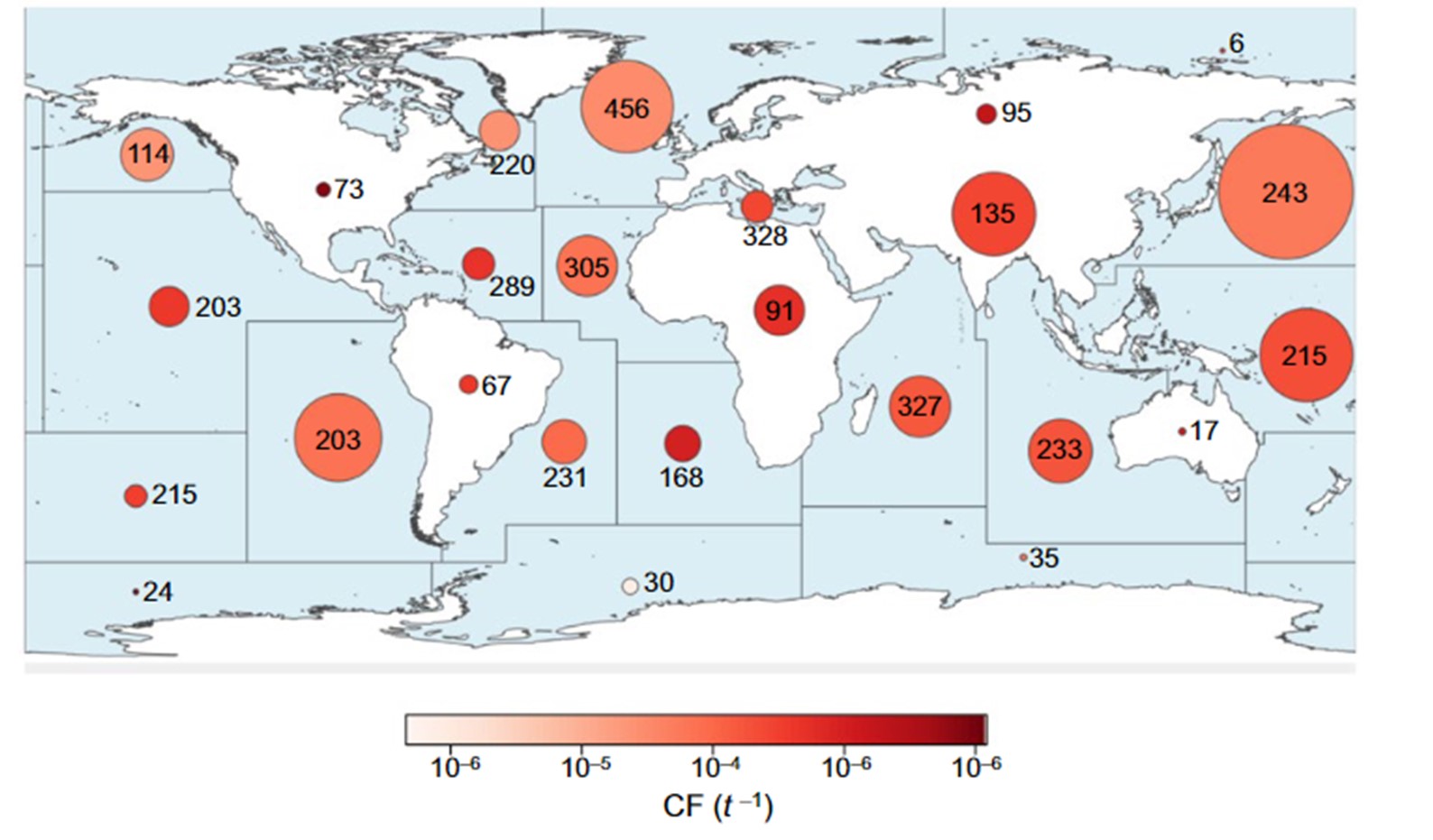
Climate change at multiple tipping points
Mounting evidence indicates that climate tipping points can have large, potentially irreversible, impacts on the earth system and human societies. However, climate change metrics applied in current sustainability assessment methods generally do not consider these tipping points. Instead, they use arbitrarily determined time horizons and assume that the climate impact of a product or service is independent of emission timing.
Researchers at DTU and University College in London have now developed a new method for climate change assessment that includes multiple climate tipping characterization factors for greenhouse gas emissions (carbon dioxide, methane, and nitrous oxide) at both midpoint and endpoint. The multiple climate tipping points potential (MCTP) is a novel metric in LCA. It addresses how greenhouse gas emissions contribute to disturbing those processes in the Earth system that could reach a tipping point and trigger large, abrupt, and potentially irreversible changes. The new characterization factors cover 13 projected climate tipping points, incorporate the effect that the crossing of a given tipping point has on accelerating the crossing of other tipping points, and link resulting climate effects to losses of terrestrial species biodiversity.
Improved mathematical framework for ecotoxicity
Researchers from different countries (including the JRC in Italy, the University of Gothenburg in Sweden, DTU in Denmark, and Nijmegen and Leiden Universities in the Netherlands) propose a consistent mathematical framework for calculating freshwater ecotoxicity characterization factors and their underlying fate, exposure and effect parameters. This framework is consistent with recommendations resulting from international expert workshops and consultations held under the umbrella of the GLAM project. Among other factors, the framework includes specific recommendations for adapting the ecotoxicity effect modeling approach to better reflect environmentally relevant exposure levels and including more data from tests about chronic exposure. They also implemented the framework into the USEtox scientific consensus model and demonstrated it with a case study.
Re-thinking effect factors to measure salinity impacts
Salinity is changing in aquatic systems due to anthropogenic interference, but little is known about its effect in LCIA. The few works that do address this topic use ecotoxicity models to include the impact. However, these models assume that an increase in the concentration of a chemical increases its impacts. This is true for most pollutants, but not for substances like salt, as this approach disregards the effects of water freshening.
A group of Spanish scientists developed a framework to address the impacts of salinity variations, including emission-related positive effects. This research addresses the expansion of current effect factors to reflect that, for substances like salts, there is an optimal concentration range. Negative impacts can happen if the concentration of the chemical either increases or decreases. In fact, many environmental mechanisms have a V shape, although the current environmental models do not usually represent this effect. Under this new approach, an emission can sometimes also generate positive impacts. This framework can potentially also be applied to other substances, like metals, macronutrients, and water.
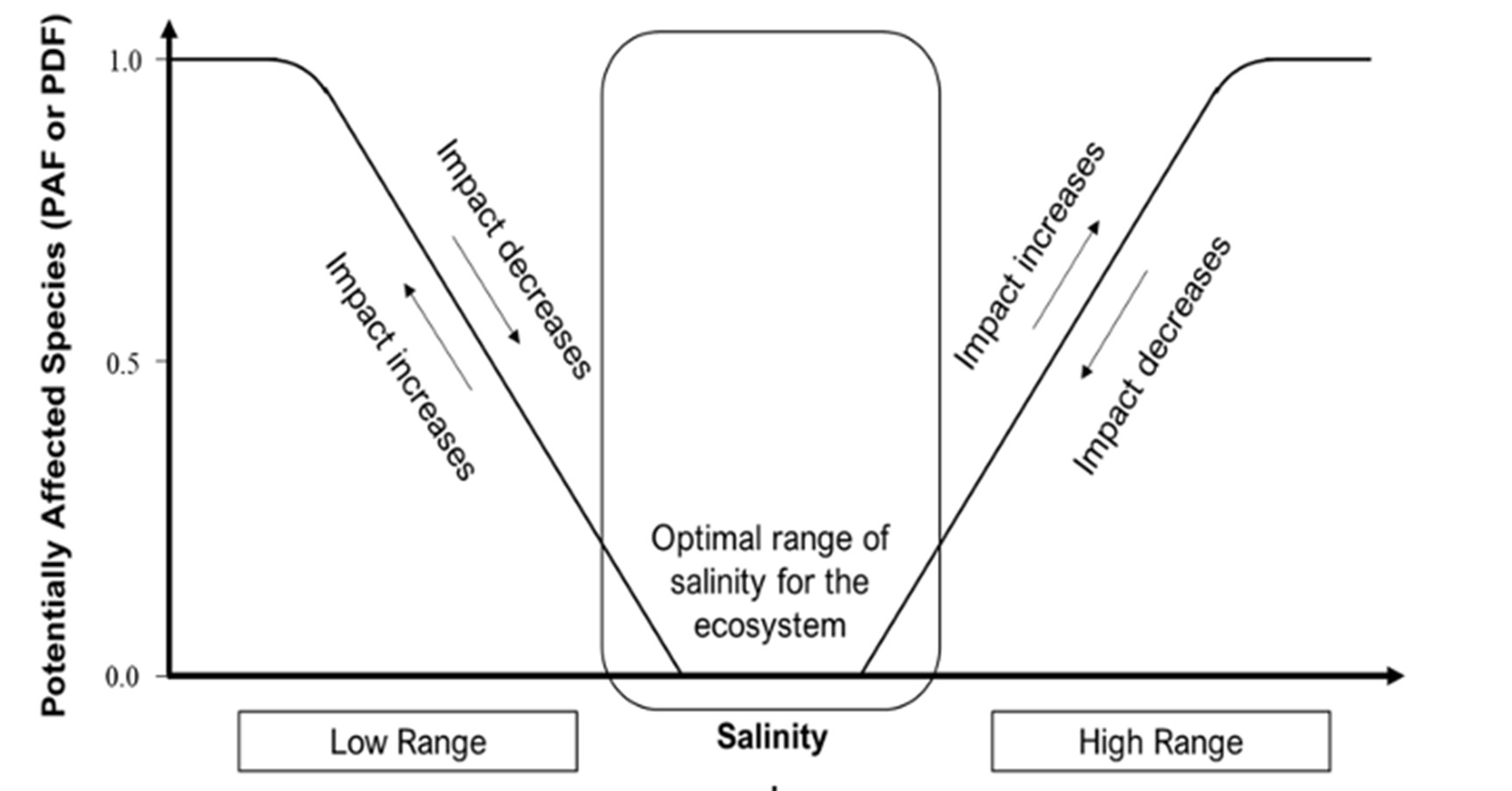
Alba Roibas Rozas
Analyst
Alba worked at PRé between 2022 and 2023. As a part of the Consultancy team, she collaborated with many LCA-related projects. She carried out projects in the field of biodiversity and corporate footprinting, and provided SimaPro trainings.
Laura Golsteijn
Senior Consultant
I am eager to increase the environmental awareness of our society, and I believe that everyone can contribute to a more sustainable world, every day. At PRé we provide companies with both the knowledge and the tools to improve their products and services. I am excited to work for an organisation that is involved in developing sustainable initiatives.